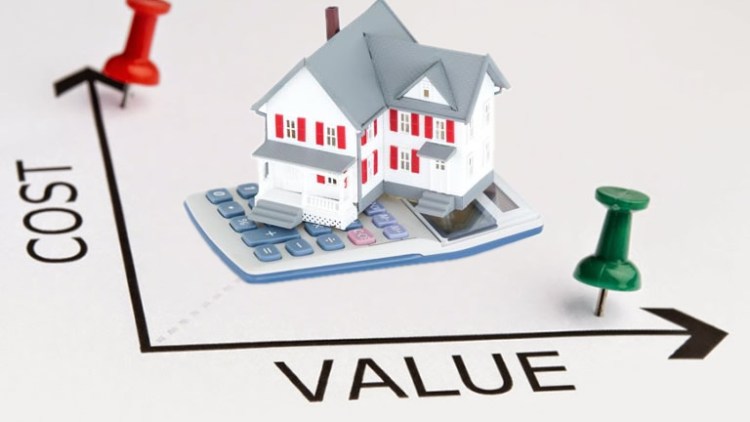Table of Contents

Choosing the right property valuation method is crucial when you’re looking to invest in real estate. It can mean the difference between a profitable investment and a costly mistake. In this guide, we’ll explore various property valuation methods to help you make informed decisions.
Understanding how to accurately determine the value of a property is essential for both seasoned investors and those just starting in real estate. Each valuation method has its strengths and weaknesses, and the best one for your investment depends on factors like property type, location, and your investment goals.
Cost Approach
The Cost Approach is one of the fundamental methods for valuing real estate properties. It assesses a property’s value by determining how much it would cost to replace or reproduce it, taking into account depreciation. This method is particularly useful when dealing with newer properties or unique structures.
To calculate the property’s value using the Cost Approach, you consider the cost of the land, the cost of constructing the building, and the cost of any small home improvements or renovations. You then subtract any depreciation or loss in value due to factors like wear and tear or obsolescence.
While the Cost Approach is valuable for newer properties, it may not be as accurate for older properties with unique features or those located in areas with rapidly changing market conditions. Therefore, investors often combine this method with other valuation approaches to arrive at a more comprehensive estimate of a property’s value.
Gross Rent Multiplier
The Gross Rent Multiplier is an uncomplicated method for assessing the value of residential rental properties. Instead of delving into complex calculations, it offers a quick way to estimate a property’s worth based on its rental income.
Here’s how it works: You take the property’s sale price and divide it by the annual rental income it generates. For example, if a house costs $500,000 and brings in $40,000 in rent each year, the GRM would be 12.5.
A lower GRM generally suggests a potentially better investment because it means you’re paying less for each dollar of rental income. However, keep in mind that GRM doesn’t consider various factors like operating expenses, vacancies, or future rent increases. Therefore, while it’s a helpful initial screening tool, it shouldn’t be the sole method for making investment decisions.
Investors often use the GRM in conjunction with other valuation methods to get a more comprehensive view of a property’s potential. It’s particularly handy when you’re comparing multiple rental properties to quickly identify those that might deserve a closer look.
Comparable Sales Analysis
When it comes to valuing a property, one of the tried-and-true methods is the Comparable Sales Analysis, often referred to as “comps.” This approach involves looking at recently sold properties in the same area that are similar to the one you’re interested in. By comparing these similar properties, you can estimate the value of your target property.
However, it’s essential to consider any differences between these comps and your target property. For instance, if your property has a larger backyard or a more modern kitchen, these features might justify a slightly higher valuation. Conversely, if it has less square footage or requires significant repairs, this could lower its value.
Comparable Sales Analysis is especially useful for residential properties, where there’s a wealth of sales data available. It provides a practical and real-world benchmark for property valuation, reflecting the current market conditions and buyer sentiments in a specific location.
Income Capitalization Approach
The Income Capitalization Approach is a go-to method for assessing the value of income-generating properties like rental apartments, office buildings, or shopping centers. It’s all about the income potential. Investors use this method to estimate a property’s value based on its expected income and expenses.
The Income Capitalization Approach helps investors understand how much they can reasonably expect to earn from an income property. It’s especially valuable when comparing potential investments because it provides a clear picture of which properties are likely to generate the best returns based on their income streams and market conditions.
Discounted Cash Flow Analysis
The Discounted Cash Flow (DCF) Analysis is a more intricate property valuation method used when you need to forecast future cash flows and consider the time value of money. It’s particularly helpful for properties with complex income streams or long-term investment horizons.
Here’s how it works: Say you’re considering an investment in a commercial property, such as an office building. To use DCF, you’d project the property’s future cash flows, which include rental income and expenses, over a specified period, often several years. You’d also estimate a future resale value for the property.
Then comes the crucial part: discounting those future cash flows and the resale value back to their present values. This accounts for the fact that money received in the future is worth less than money received today due to inflation and the opportunity cost of not having the money available for other investments.
The DCF Analysis can provide a more comprehensive and accurate property valuation, but it requires detailed financial projections and a chosen discount rate that reflects the property’s risk and opportunity cost. It’s a powerful tool for assessing long-term investments but may not be necessary for all real estate transactions.
Your Path to Informed Investments
In the world of real estate investment, choosing the right property valuation method is akin to having a reliable compass on your journey. Each method we’ve explored—Cost Approach, Gross Rent Multiplier, Comparable Sales Analysis, Income Capitalization Approach, and Discounted Cash Flow Analysis—serves as a compass needle, pointing you toward the true value of a property.
The key is to use these methods wisely, considering the unique characteristics of the property you’re eyeing and your investment goals. For instance, if you’re assessing a cozy residential home, the Comparable Sales Analysis might be your trusty guide. On the other hand, if you’re venturing into commercial real estate, the Income Capitalization Approach could be your North Star.
Remember that these methods often work best when used together, cross-referencing their findings to ensure a more accurate assessment. Moreover, staying attuned to local market dynamics, economic trends, and property-specific factors can further refine your valuation skills.
With these valuation methods in your toolkit and a keen eye on the ever-changing real estate landscape, you’re well-prepared to make informed investment decisions and embark on a successful real estate journey.







